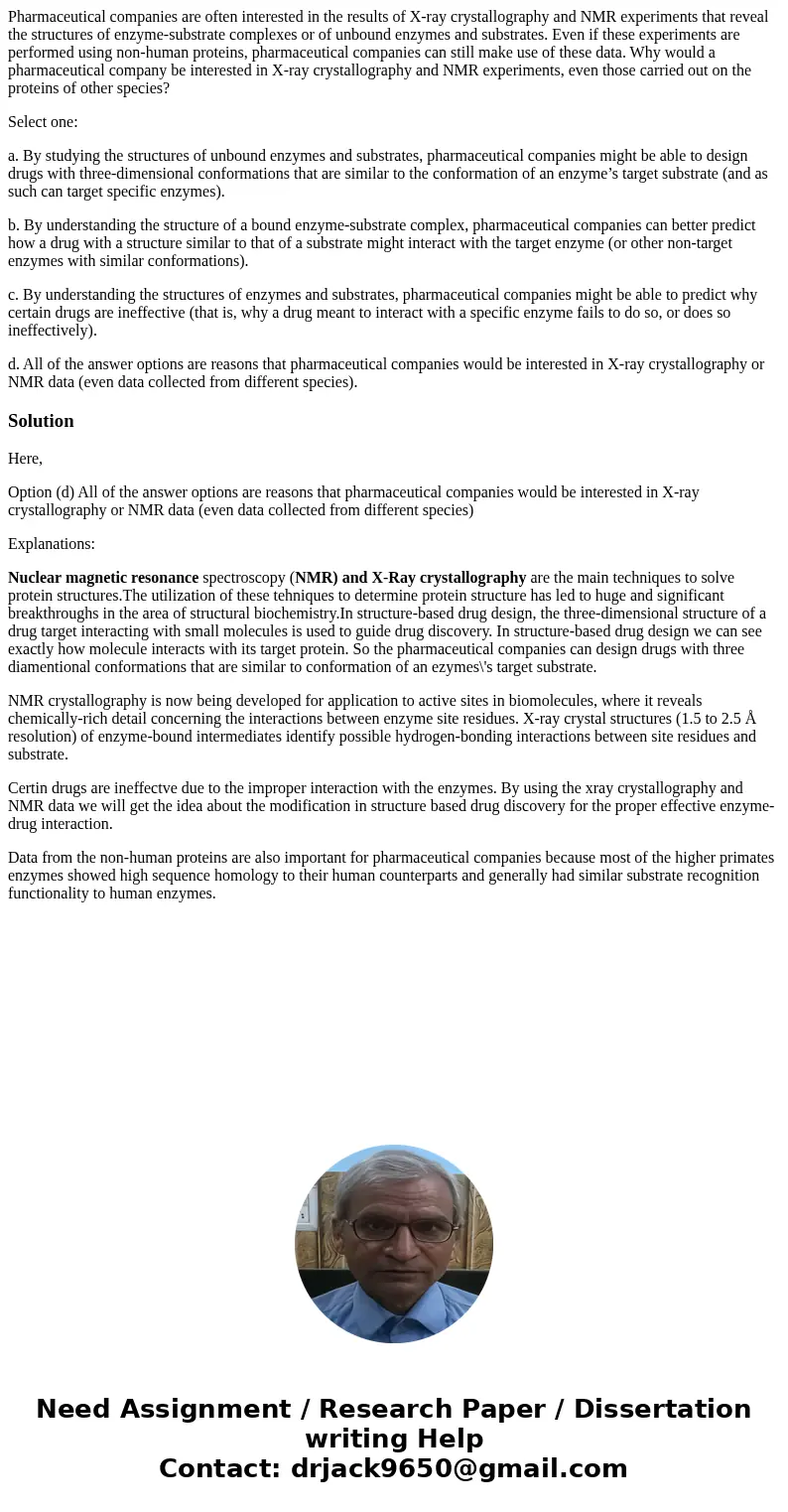Pharmaceutical companies are often interested in the results
Pharmaceutical companies are often interested in the results of X-ray crystallography and NMR experiments that reveal the structures of enzyme-substrate complexes or of unbound enzymes and substrates. Even if these experiments are performed using non-human proteins, pharmaceutical companies can still make use of these data. Why would a pharmaceutical company be interested in X-ray crystallography and NMR experiments, even those carried out on the proteins of other species?
Select one:
a. By studying the structures of unbound enzymes and substrates, pharmaceutical companies might be able to design drugs with three-dimensional conformations that are similar to the conformation of an enzyme’s target substrate (and as such can target specific enzymes).
b. By understanding the structure of a bound enzyme-substrate complex, pharmaceutical companies can better predict how a drug with a structure similar to that of a substrate might interact with the target enzyme (or other non-target enzymes with similar conformations).
c. By understanding the structures of enzymes and substrates, pharmaceutical companies might be able to predict why certain drugs are ineffective (that is, why a drug meant to interact with a specific enzyme fails to do so, or does so ineffectively).
d. All of the answer options are reasons that pharmaceutical companies would be interested in X-ray crystallography or NMR data (even data collected from different species).
Solution
Here,
Option (d) All of the answer options are reasons that pharmaceutical companies would be interested in X-ray crystallography or NMR data (even data collected from different species)
Explanations:
Nuclear magnetic resonance spectroscopy (NMR) and X-Ray crystallography are the main techniques to solve protein structures.The utilization of these tehniques to determine protein structure has led to huge and significant breakthroughs in the area of structural biochemistry.In structure-based drug design, the three-dimensional structure of a drug target interacting with small molecules is used to guide drug discovery. In structure-based drug design we can see exactly how molecule interacts with its target protein. So the pharmaceutical companies can design drugs with three diamentional conformations that are similar to conformation of an ezymes\'s target substrate.
NMR crystallography is now being developed for application to active sites in biomolecules, where it reveals chemically-rich detail concerning the interactions between enzyme site residues. X-ray crystal structures (1.5 to 2.5 Å resolution) of enzyme-bound intermediates identify possible hydrogen-bonding interactions between site residues and substrate.
Certin drugs are ineffectve due to the improper interaction with the enzymes. By using the xray crystallography and NMR data we will get the idea about the modification in structure based drug discovery for the proper effective enzyme-drug interaction.
Data from the non-human proteins are also important for pharmaceutical companies because most of the higher primates enzymes showed high sequence homology to their human counterparts and generally had similar substrate recognition functionality to human enzymes.

 Homework Sourse
Homework Sourse